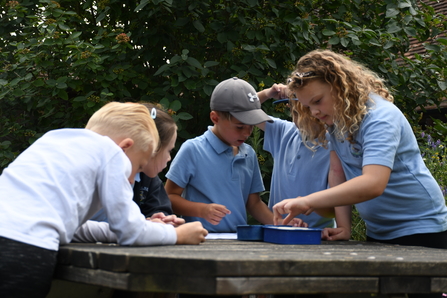Here at Kent Wildlife Trust, a lot of our work involves wellbeing – be it directly, through programmes like Wilder Wellbeing, or indirectly, through our vision for and work towards a Wilder Kent for all by 2030. We also offer extensive education and forest school programmes, many of which centre children and their relationship to the natural world.
It’s our firm belief that nature isn’t a ‘nice to have’ but a core necessity for happy, healthy humans. And we’re not alone in this – studies prove daily that time spent in nature makes us more relaxed, resilient, and healthy humans. So, we think that everyone should have access to and be able to interact with nature.
On the other side of the same coin, is that while nature helps us, we also have a responsibility to help it; when we do, we can begin to manage things like climate anxiety. Children are the future, and many of them are incredibly clued-up on climate change and the fact that we need a healthy world. This Children’s Mental Health Week, we encourage parents, carers, and schools to open up the conversation about our environment and wildlife – you might be surprised at just how much they have to say about it!
That being said, here are some wildlife-focused things you can do during this important week and beyond that will help children express themselves and understand their impact.
